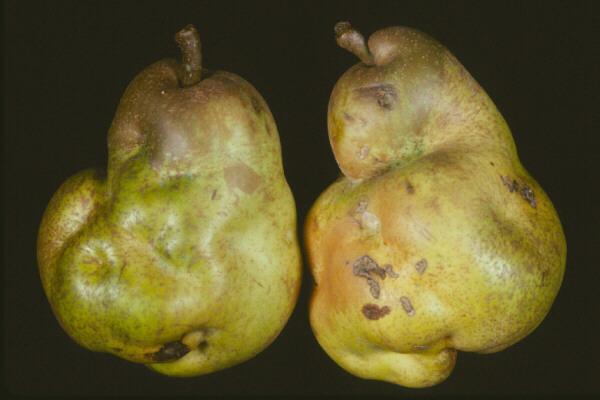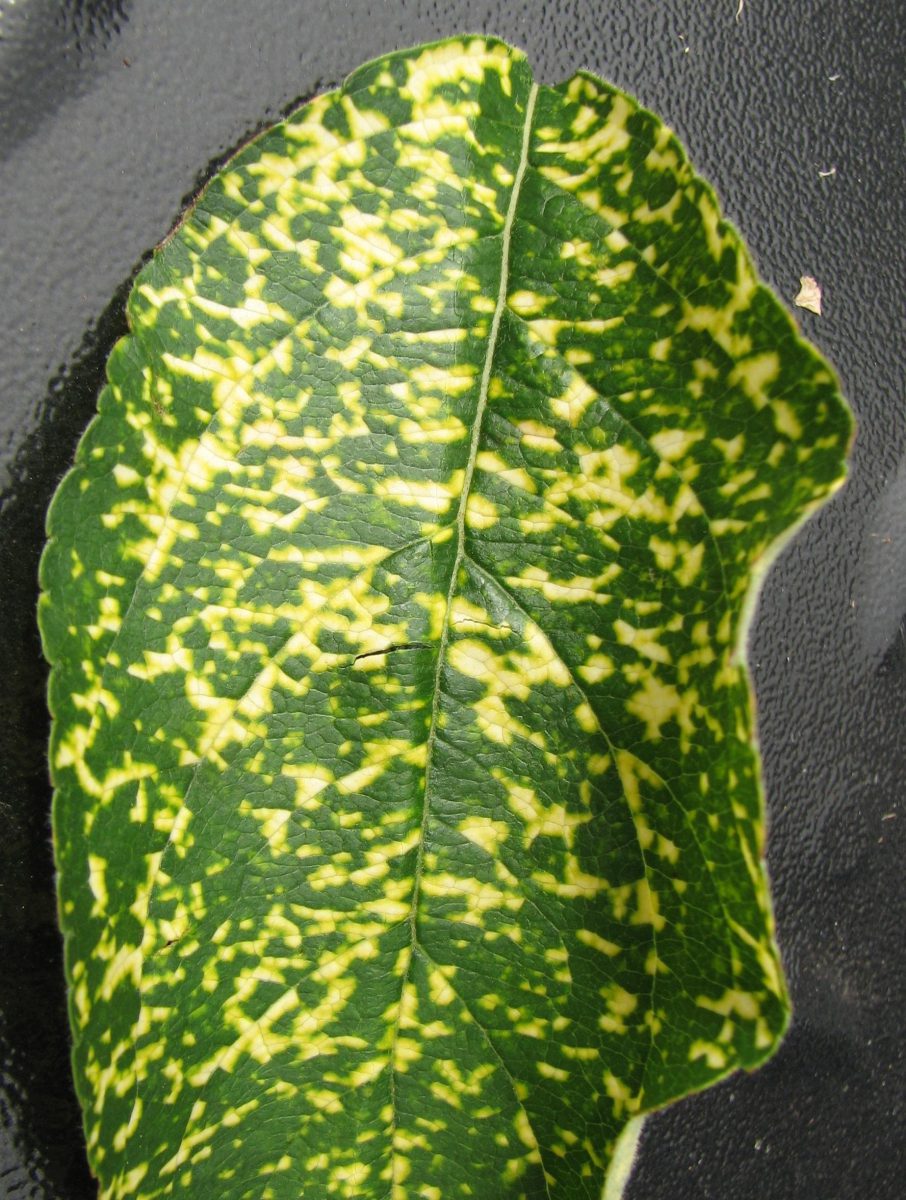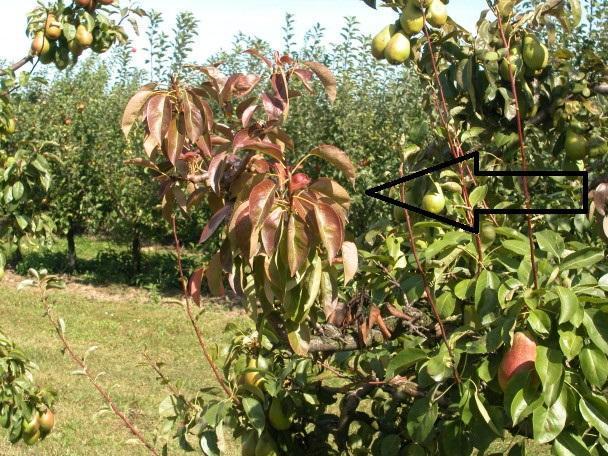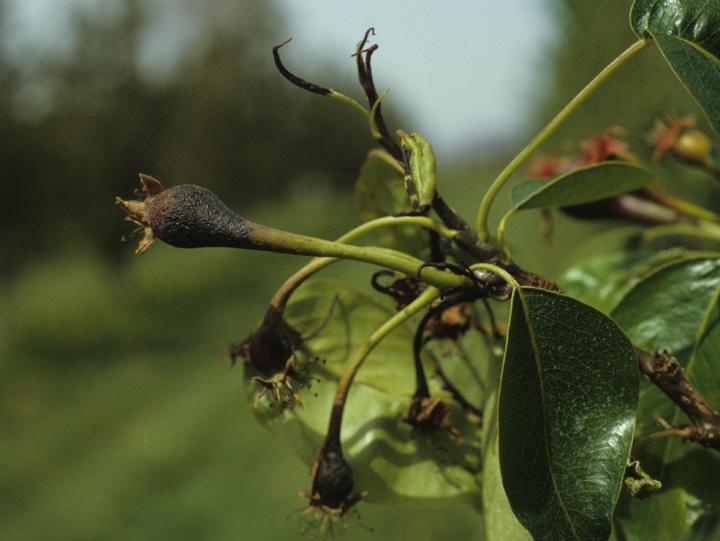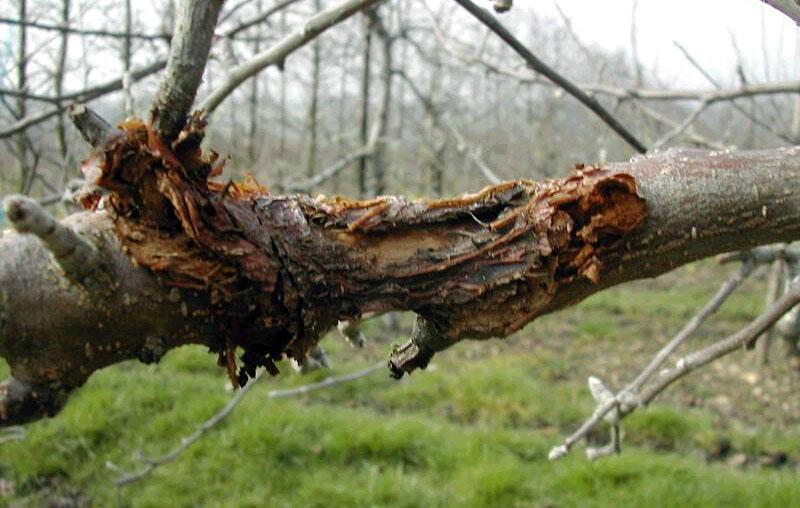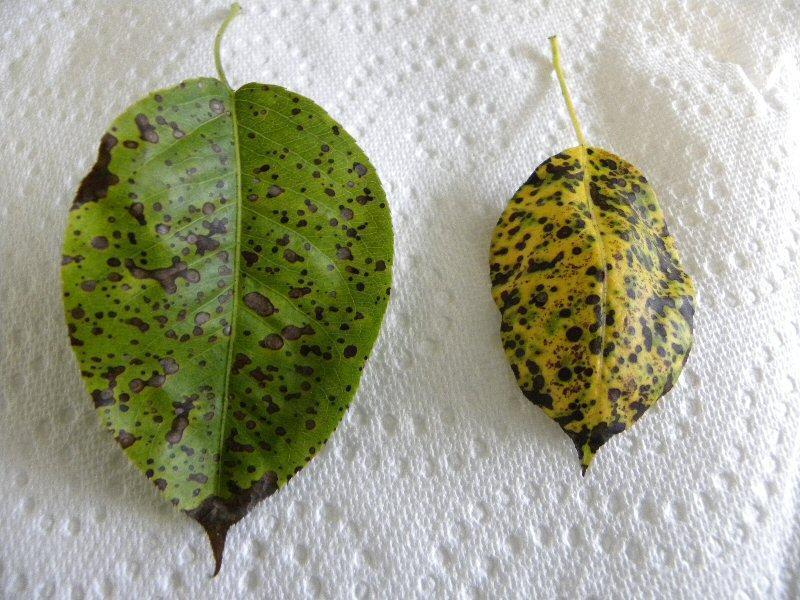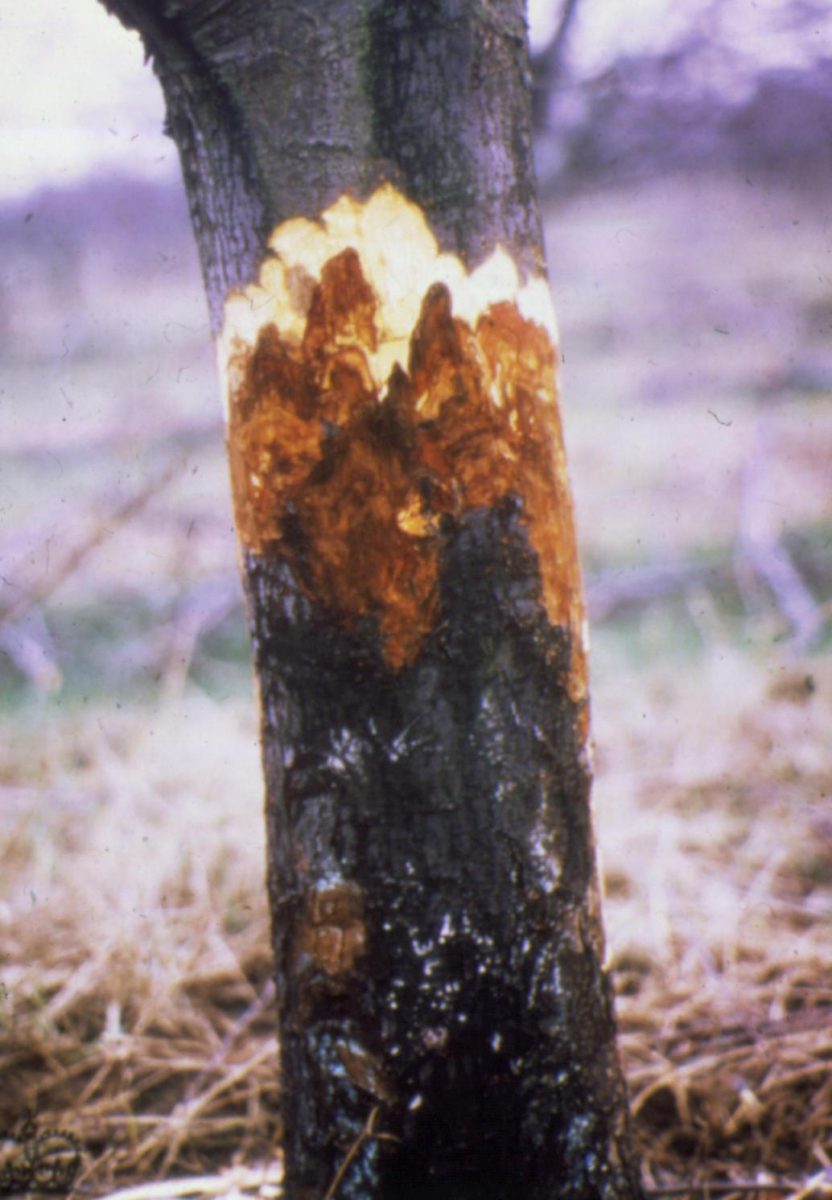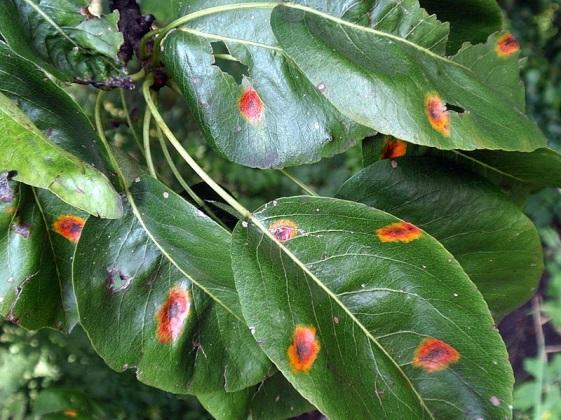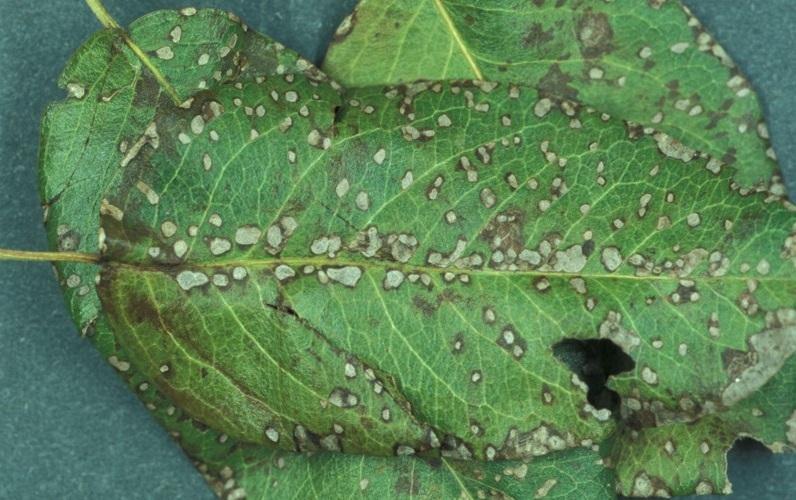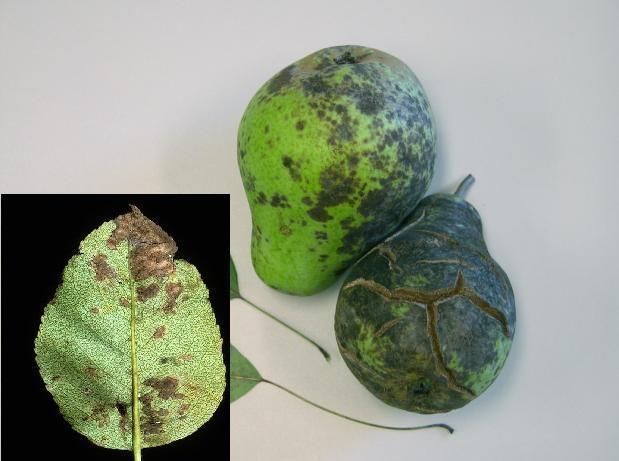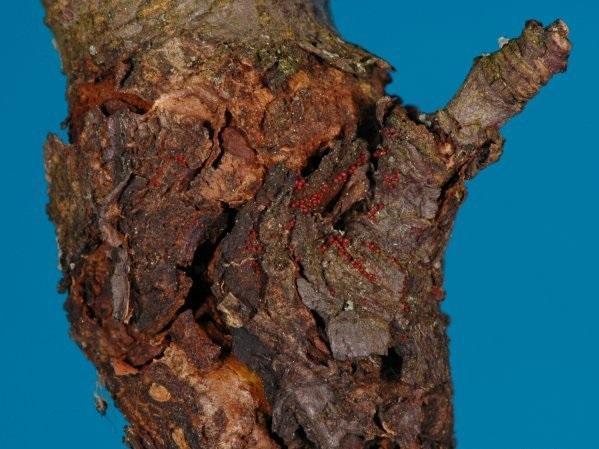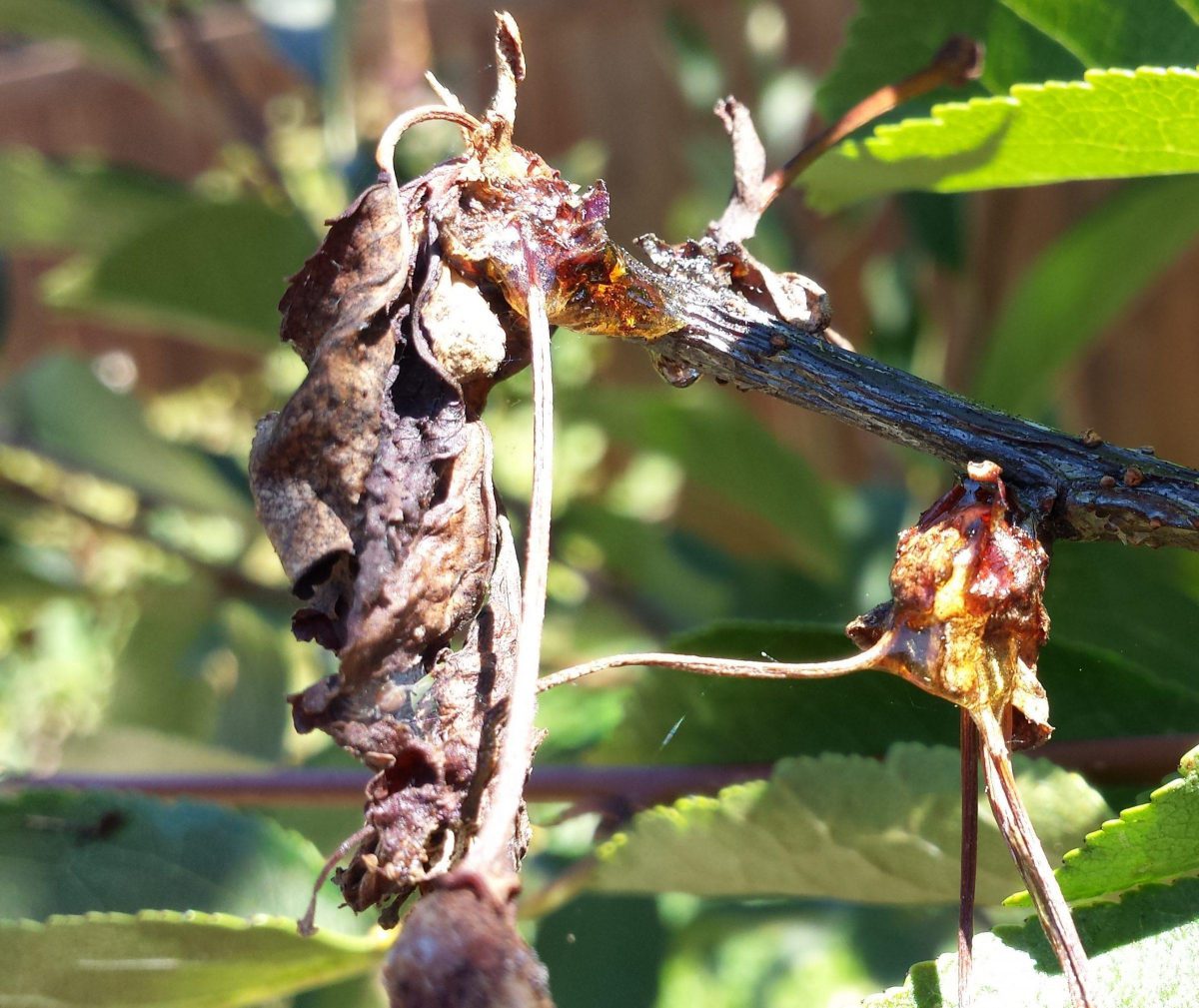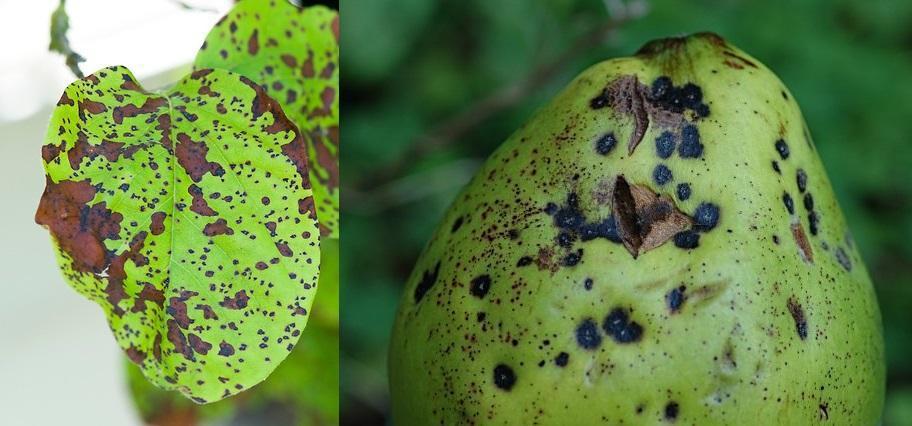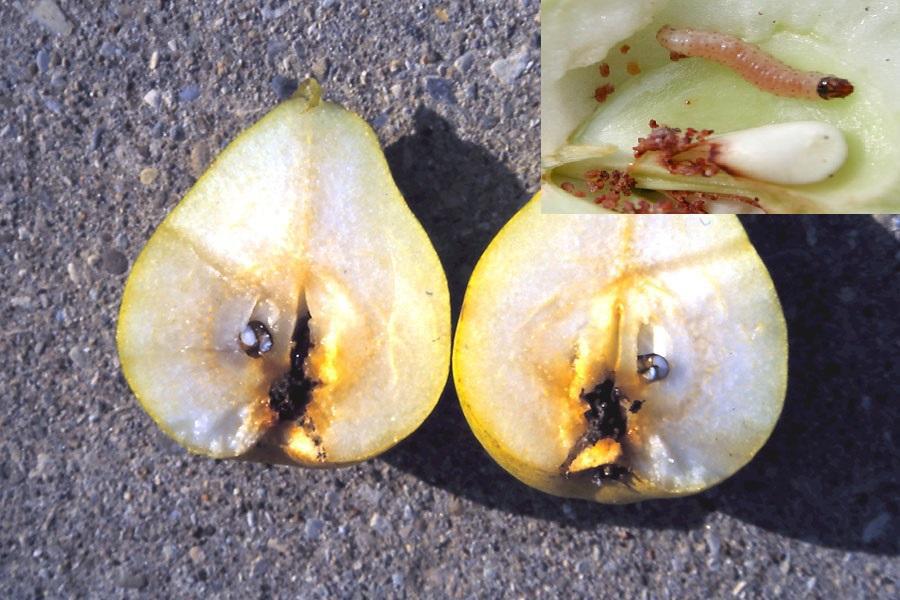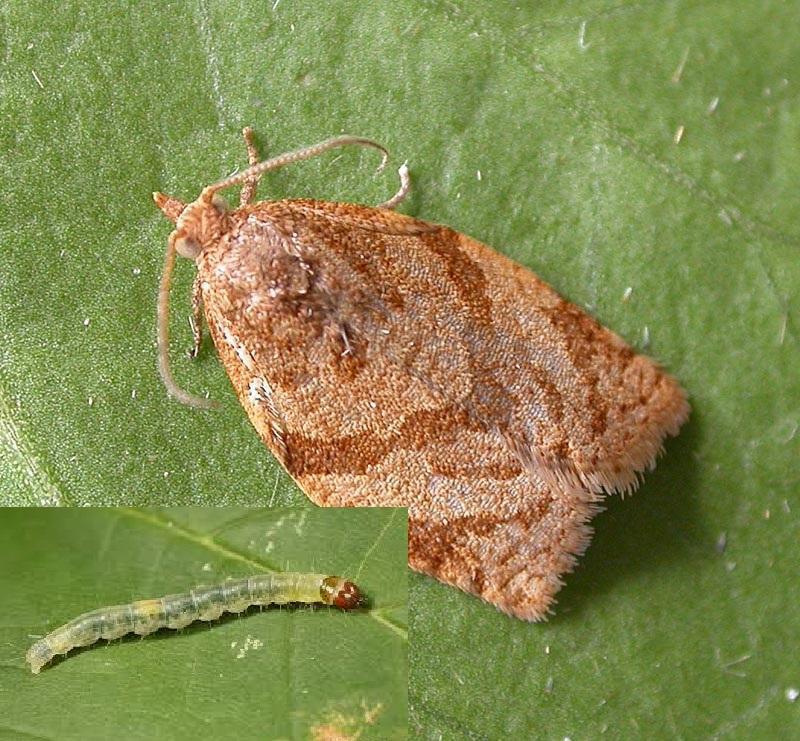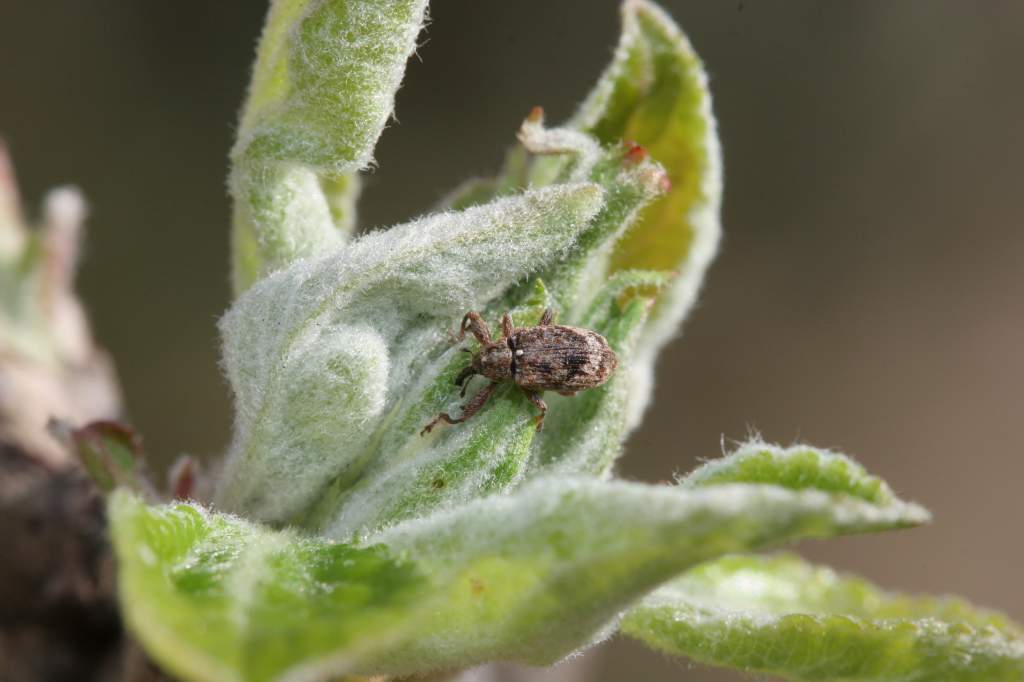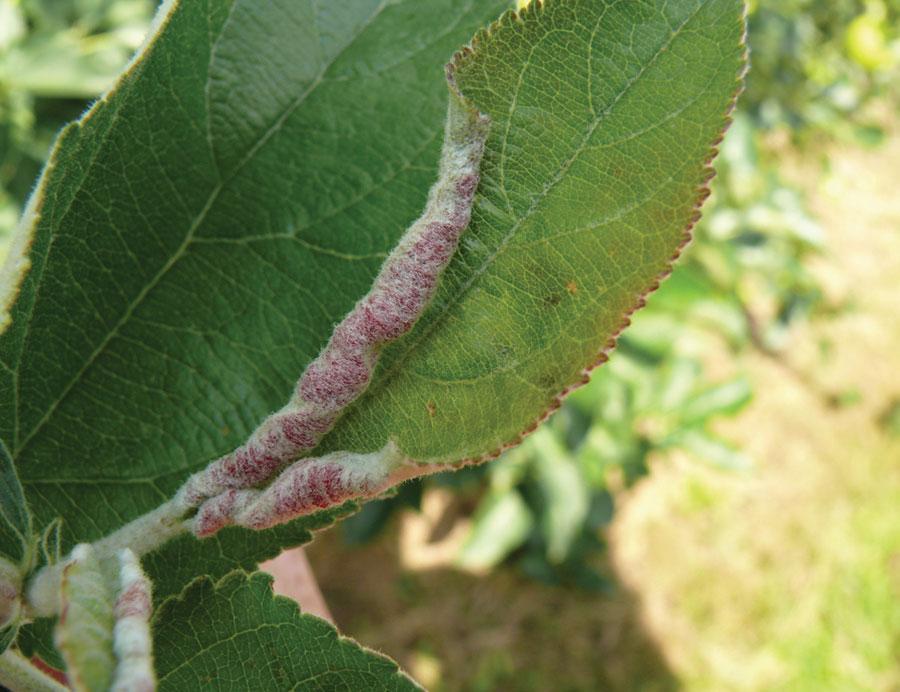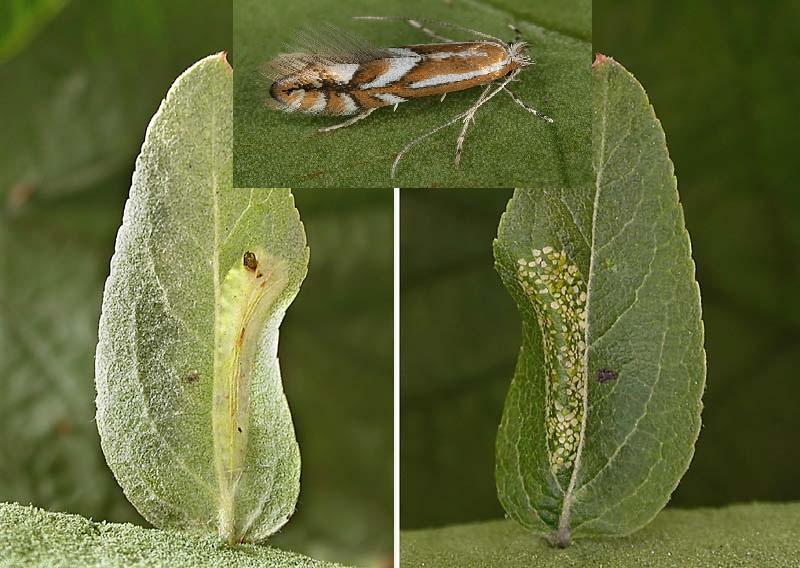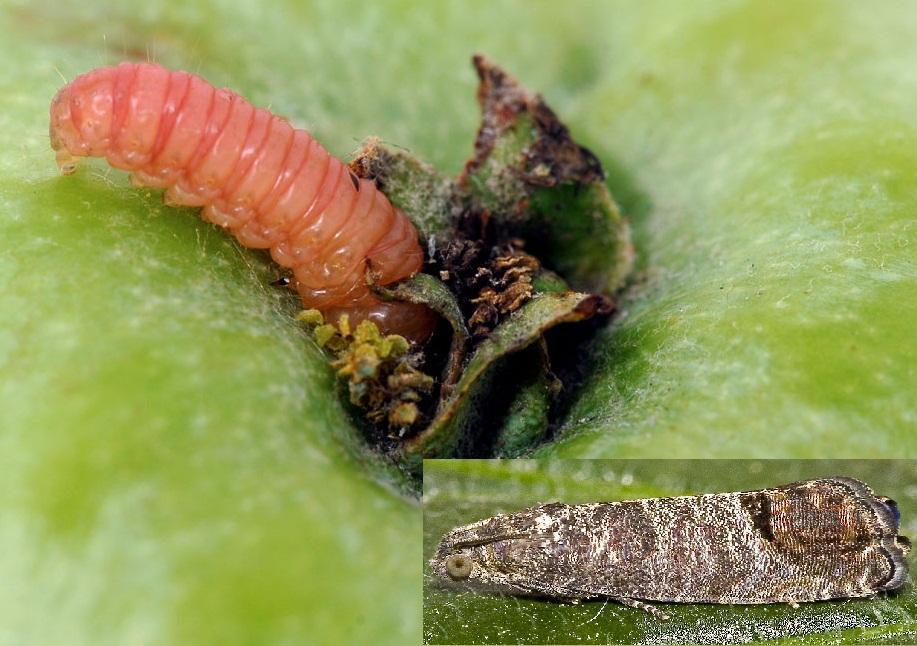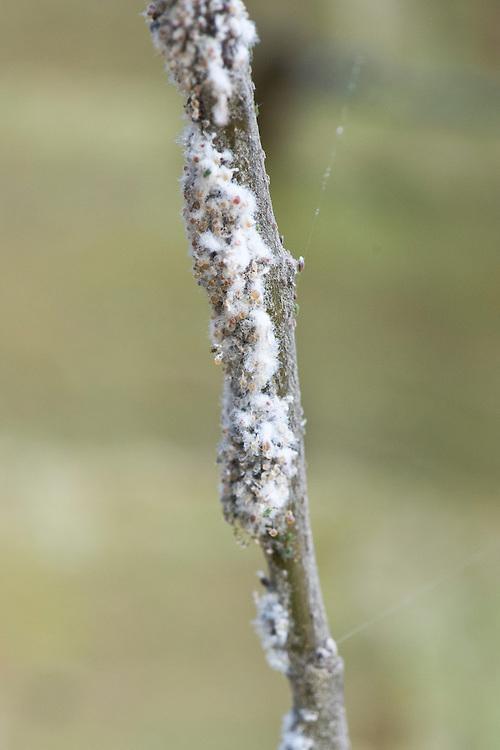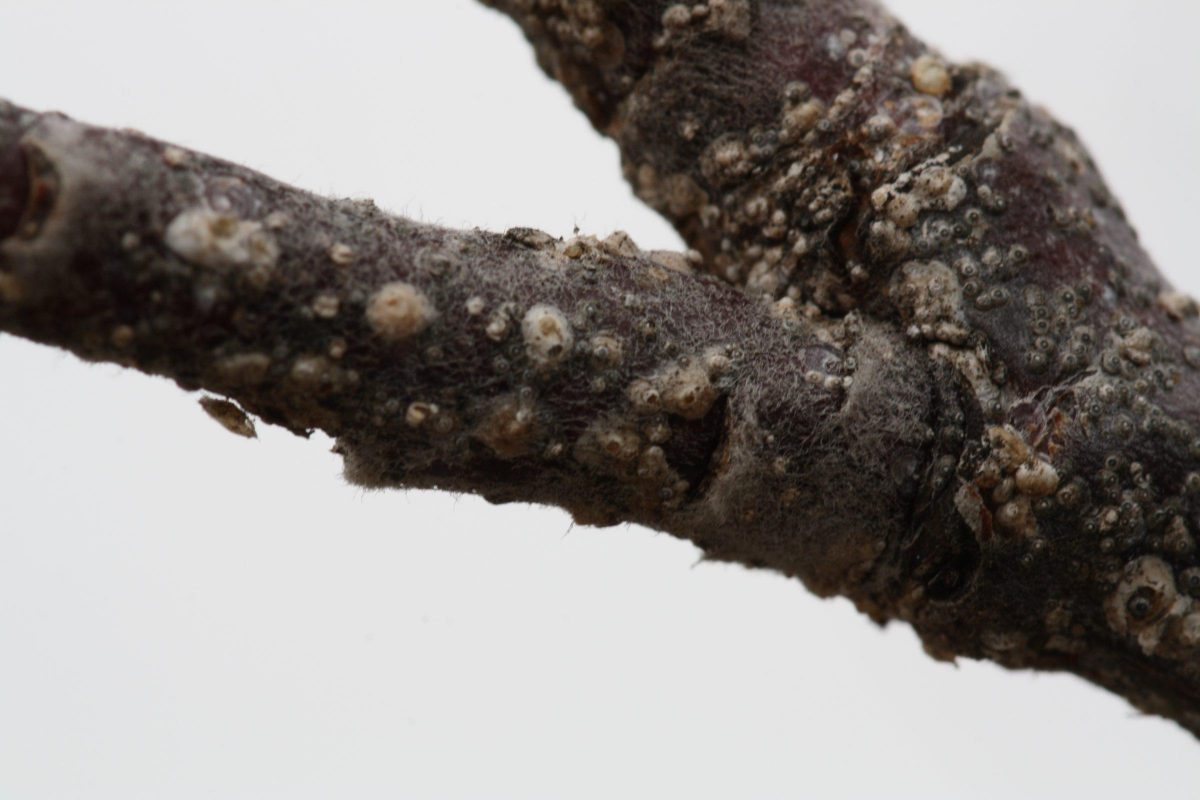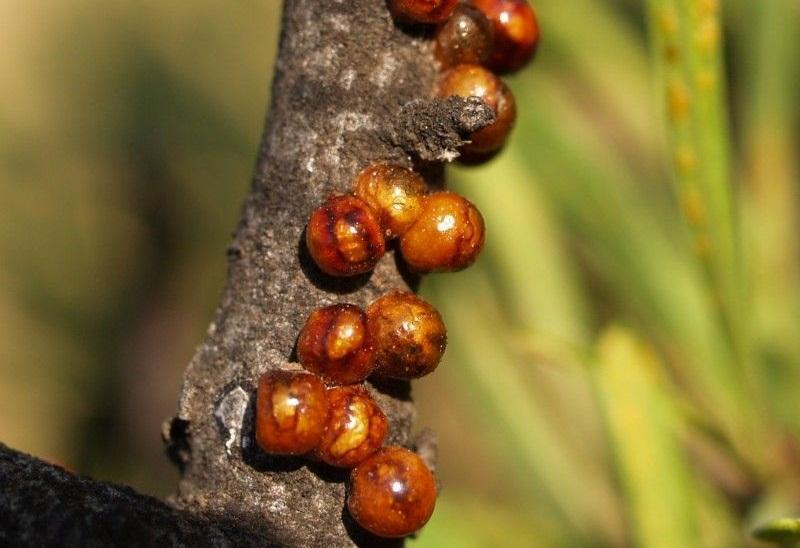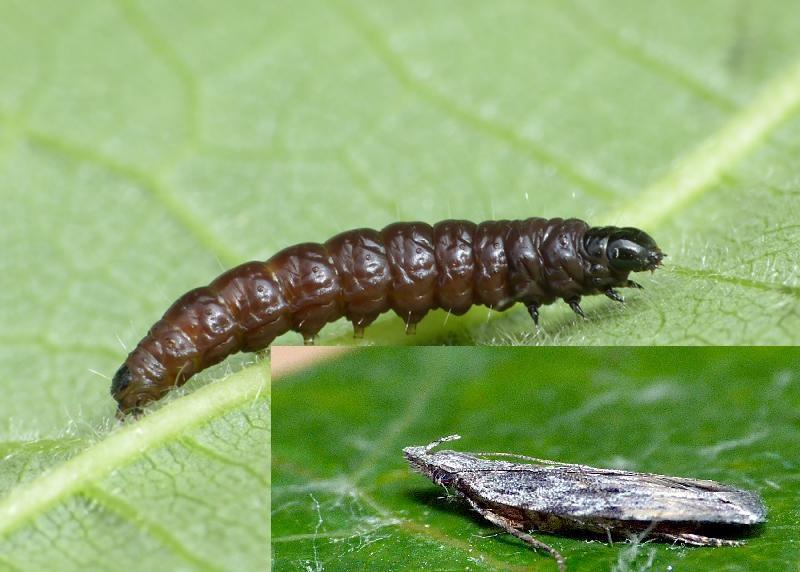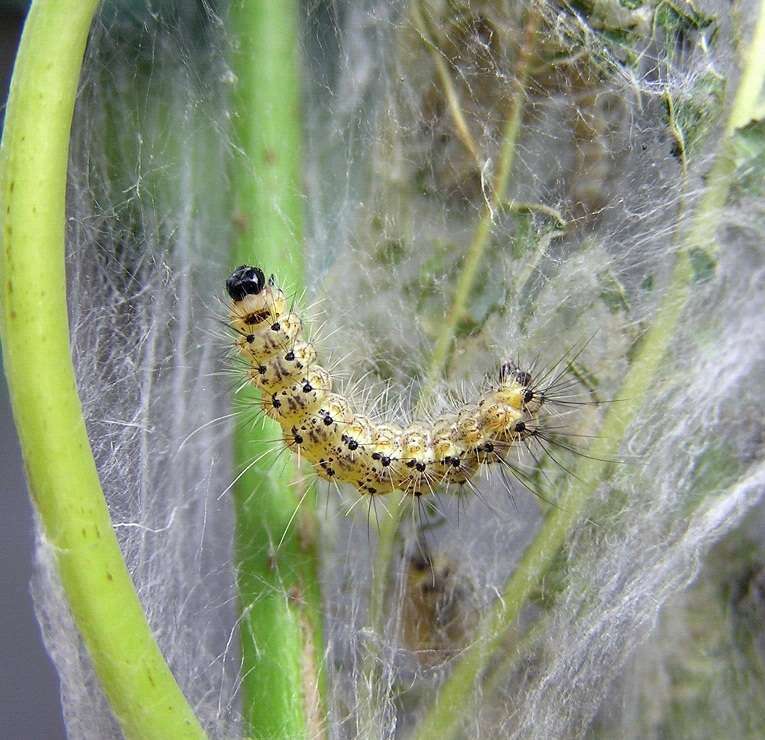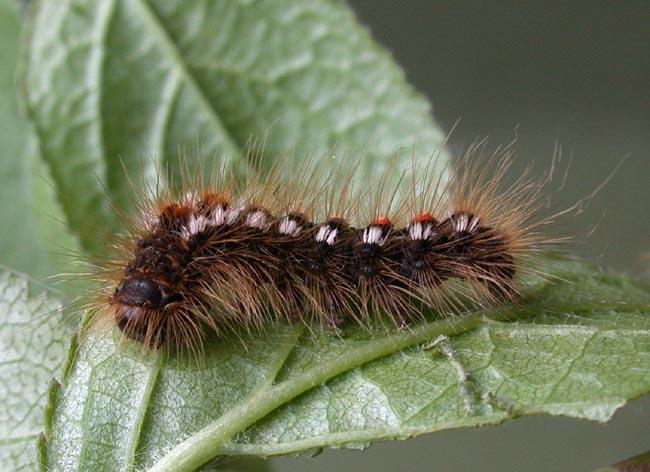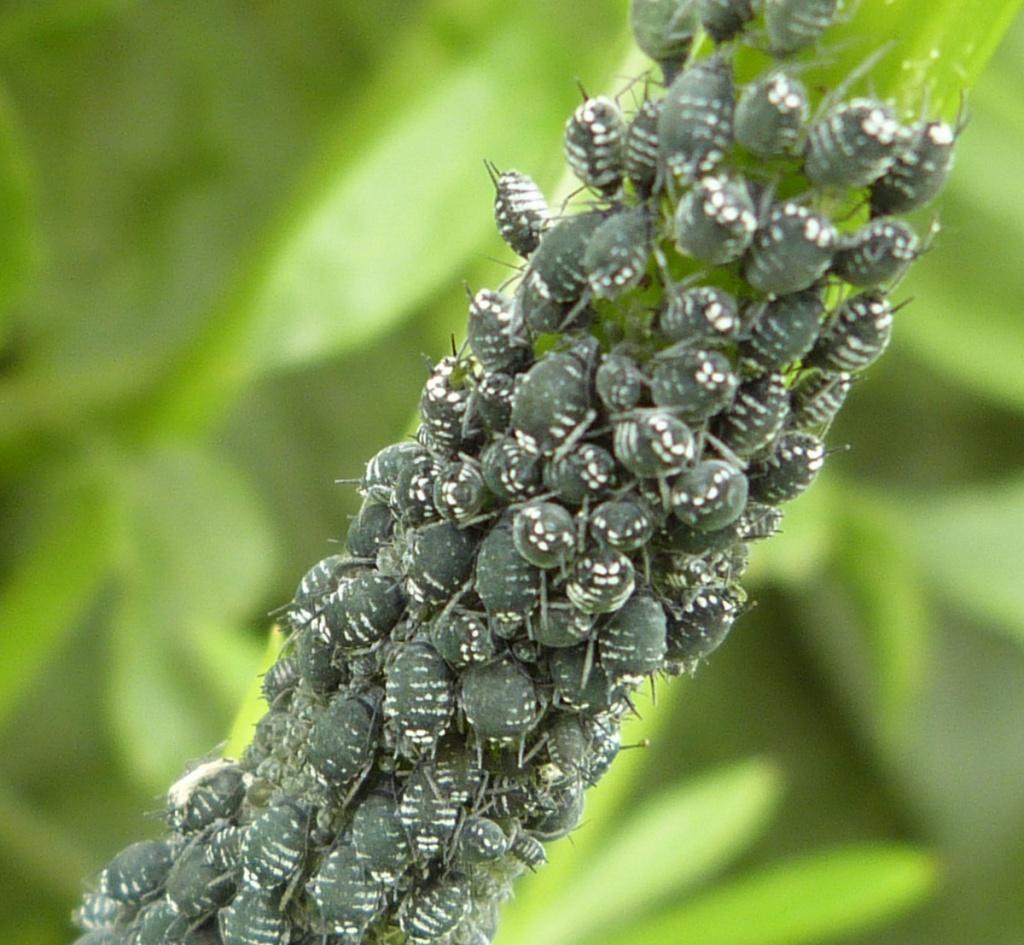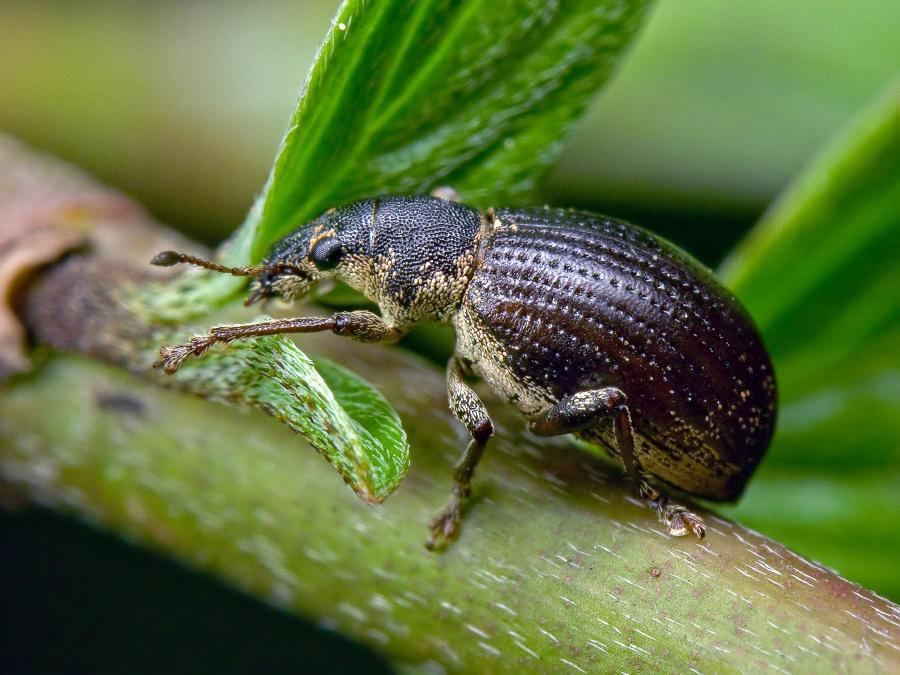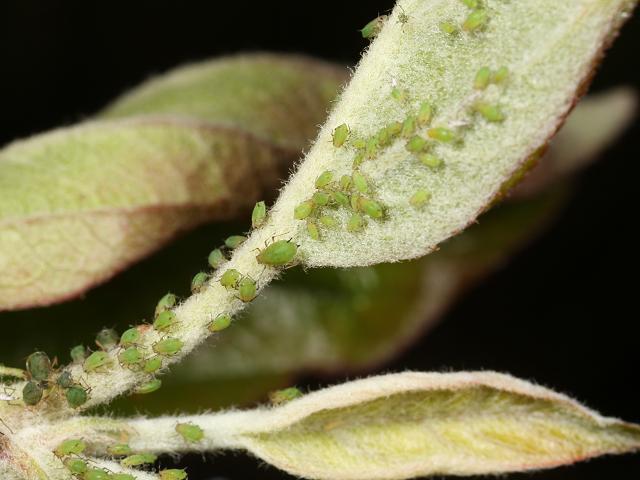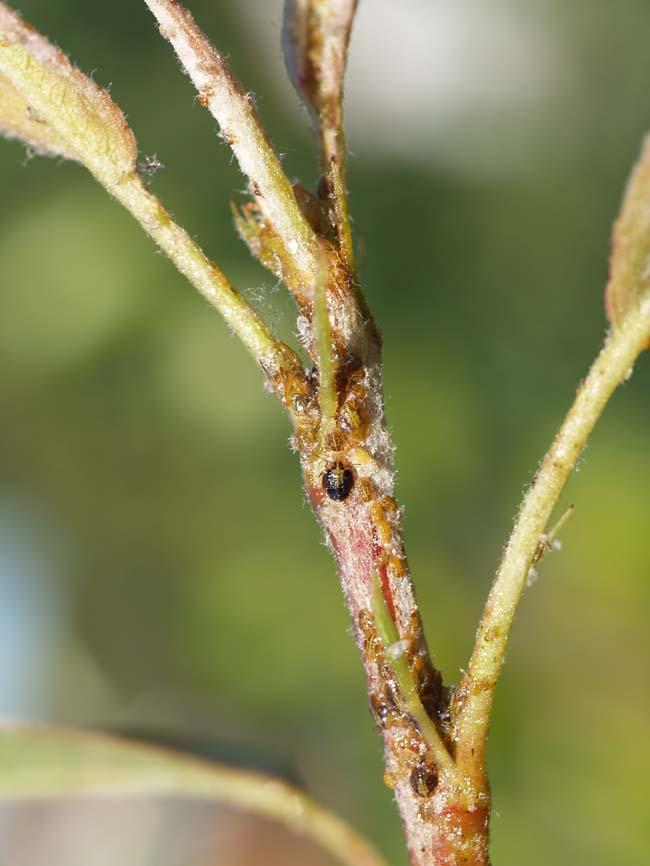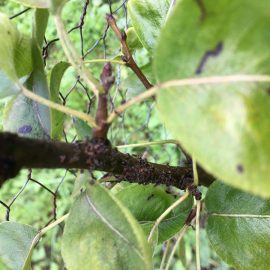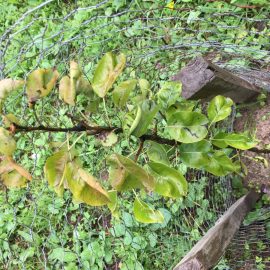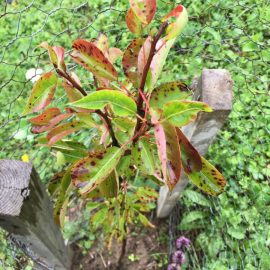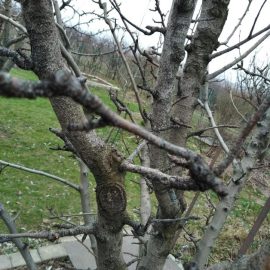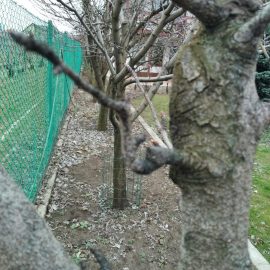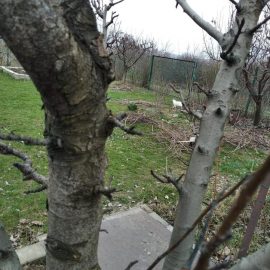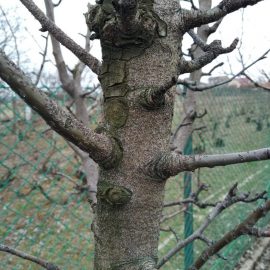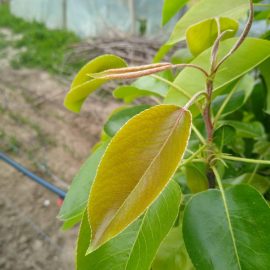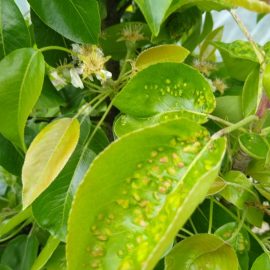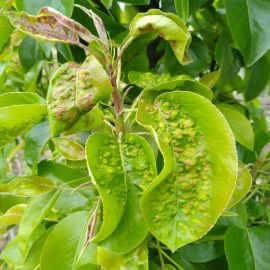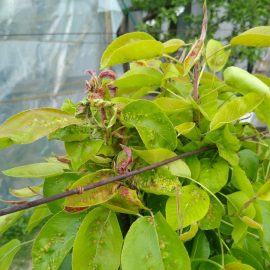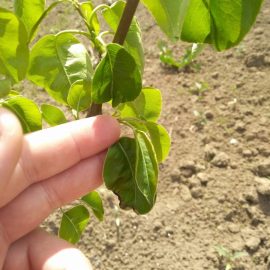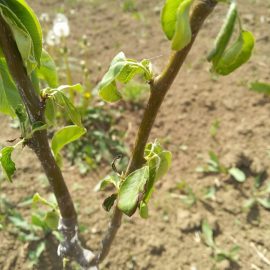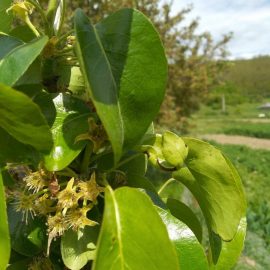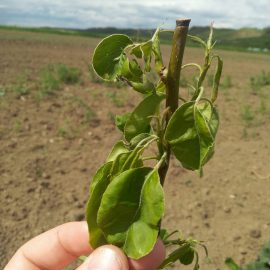Pear tree treatments, pest and disease control
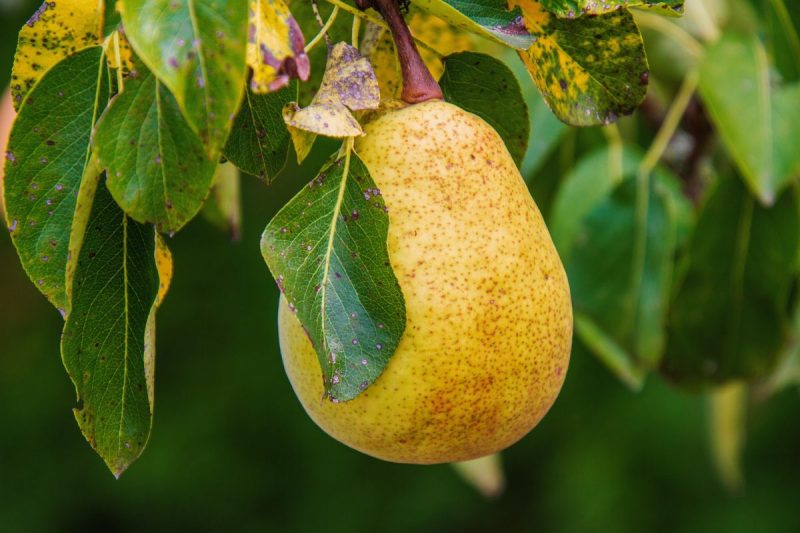
The pear tree (Pyrus communis) is a fruit tree that is part of the Rosaceae family. It is thought to be native to Asia (China and Asia Minor). It has a rustic appearance, the crown has a characteristic shape, and can reach 20 meters in height. The leaves are oval or round. The flowers are white and appear at the same time as the leaves. The pear tree is widespread in culture due to its nutrient-rich fruits. These contain water, sugars, cellulose, tannin, fiber, mineral salts, zinc, copper, iron, calcium, magnesium, and vitamins (A, B1, B2, B9, C, E, P, K).
VIRUSES
Stony pit (Pear stony pit virus)
The fruit has pronounced bumps on the surface. As they develop, the fruit will deform. The pulp shows brownish and hard areas. Because of this, the fruit becomes inedible. This disease spreads by grafting.
Prevention and control measures:
- using healthy grafts and rootstocks;
- checking pear tree saplings before planting.
Pear ring pattern mosaic virus
The most common form of attack is manifested on the leaves, with irregular yellow spots. The attack is usually seen on one side of the leaves. If the temperatures are between 18-20 °C, the spots turn brown. Following the attack, the leaves fall. This decreases production and weakens the trees’ resistance. The virus is transmitted by grafting, pollen, infected seeds, and in the nursery, by contact between roots.
Prevention and control measures:
- using healthy grafts and rootstocks;
- removing affected trees from the orchard;
- planting resistant varieties of pear trees.
MYCOPLASMOSIS
Pear decline (Phytoplasma pyri)
The symptomatology of this disease is different depending on the variety. Some varieties are more resistant to the disease. Generally, in autumn, the tree loses its leaves prematurely (the leaves turn reddish), and in the following spring, it develops small, pale leaves accompanied by weak growth. Thus, production is strongly influenced. A characteristic symptom is the occurrence of brown rings, visible on examination of a cross-section of the vessels. This disease is transmitted by several species of treehoppers and by grafting.
Prevention and control measures:
- insecticide treatments to control the insect population;
- using healthy grafts and rootstocks.
BACTERIOSIS
Fire blight (Erwinia amylovora)
It is a very dangerous disease that can compromise the entire orchard. The appearance of this disease is favored by high atmospheric humidity, wind, precipitation, and high temperatures. Trees attacked by this disease appear to be burnt by fire. The twigs wither and turn brown, and the fruit turns black or becomes spotted. In wet weather, on the affected areas appear the bacterial exudate.
Prevention and control measures:
- pruning and burning the affected branches to healthy tissues;
- chemical treatments with specific fungicides.
Recommended products
-
You can find products on a different store
Change Store -
You can find products on a different store
Change Store -
You can find products on a different store
Change Store -
You can find products on a different store
Change Store -
You can find products on a different store
Change Store -
You can find products on a different store
Change Store -
You can find products on a different store
Change Store -
You can find products on a different store
Change Store -
You can find products on a different store
Change Store -
You can find products on a different store
Change Store -
You can find products on a different store
Change Store -
You can find products on a different store
Change Store -
You can find products on a different store
Change Store -
You can find products on a different store
Change Store -
You can find products on a different store
Change Store -
You can find products on a different store
Change Store -
You can find products on a different store
Change Store -
You can find products on a different store
Change Store -
You can find products on a different store
Change Store -
You can find products on a different store
Change Store -
You can find products on a different store
Change Store -
You can find products on a different store
Change Store -
You can find products on a different store
Change Store -
You can find products on a different store
Change Store
Crown gall (Agrobacterium radiobacter pv. tumefaciens)
The disease appears as tumors (galls), which vary in size depending on the plant’s age and the affected organ. Initially, small, smooth, and soft tumors appear on roots, stems, and rarely on branches or leaves. With time, the tumors enlarge, become brown or blackish-brown, and acquire a rough appearance. The pathogen enters the pear tree through wounds caused by nematodes, hail, insects, etc. The appearance of this disease is also favored by temperatures between 22 and 30 °C and atmospheric humidity of 80 %.
Prevention and control measures:
- sorting seedlings before planting;
- pear saplings should be planted on land that has been prepared accordingly;
- disinfecting scissors and tools when moving from one tree to another;
- pruning affected branches up to the healthy area, applying treatment with Bordeaux mixture, and covering wounds with tree wound sealer;
- soaking the sapling roots in a solution of Bordeaux mixture of 1%;
- treatments during vegetation with copper-based products.
Recommended products
-
You can find products on a different store
Change Store -
You can find products on a different store
Change Store -
You can find products on a different store
Change Store -
You can find products on a different store
Change Store -
You can find products on a different store
Change Store -
You can find products on a different store
Change Store -
You can find products on a different store
Change Store -
You can find products on a different store
Change Store -
You can find products on a different store
Change Store -
You can find products on a different store
Change Store -
You can find products on a different store
Change Store -
You can find products on a different store
Change Store -
You can find products on a different store
Change Store -
You can find products on a different store
Change Store -
You can find products on a different store
Change Store -
You can find products on a different store
Change Store -
You can find products on a different store
Change Store -
You can find products on a different store
Change Store -
You can find products on a different store
Change Store -
You can find products on a different store
Change Store -
You can find products on a different store
Change Store -
You can find products on a different store
Change Store -
You can find products on a different store
Change Store -
You can find products on a different store
Change Store
Bacterial canker (Pseudomonas syringae pv. syringae)
The disease attacks all the aerial parts of the trees, being favored by the cold and humid weather. Black spots appear on the leaves, arranged in the space between the veins. The spots join and destroy the entire leaf. This disease attacks the inflorescences but does not progress to the branches. The attacked twigs turn brown but do not bend. The bark on the affected branches cracks and the wounds become light-coloured. Black spots appear on the fruit, from which the bacterial exudate leaks.
Prevention and control measures:
- pruning the affected branches;
- gathering and burning fallen leaves and fruits;
- chemical treatments with copper-based fungicides.
Recommended products
-
You can find products on a different store
Change Store -
You can find products on a different store
Change Store -
You can find products on a different store
Change Store -
You can find products on a different store
Change Store -
You can find products on a different store
Change Store -
You can find products on a different store
Change Store -
You can find products on a different store
Change Store -
You can find products on a different store
Change Store -
You can find products on a different store
Change Store -
You can find products on a different store
Change Store -
You can find products on a different store
Change Store -
You can find products on a different store
Change Store -
You can find products on a different store
Change Store -
You can find products on a different store
Change Store -
You can find products on a different store
Change Store -
You can find products on a different store
Change Store -
You can find products on a different store
Change Store -
You can find products on a different store
Change Store -
You can find products on a different store
Change Store -
You can find products on a different store
Change Store -
You can find products on a different store
Change Store -
You can find products on a different store
Change Store -
You can find products on a different store
Change Store -
You can find products on a different store
Change Store
MYCOSIS
Crown rot (Phytophthora spp.)
Symptoms consist of leaves wilting and browning. Trees have slowed growth and dry out prematurely. Bacterial cancer-like lesions appear in the crown area. In wet weather, the lesions get covered with a sticky ooze. This disease develops in conditions of excessive soil moisture.
Prevention and control measures:
- rational irrigation;
- there is no treatment for this disease.
Rust (Gymnosporangium sabinae)
This fungus carries out its first vegetation phase on intermediate hosts (juniper) and then affects the pear tree. Symptoms appear as reddish spots on the leaves, on which the fungus fructifications form as black point-like spots. On the underside of the leaves, the tissues bulge and form growths that carry the spores of the fungus.
Prevention and control measures:
- planting resistant pear varieties;
- removing spontaneous shrubs in the orchard;
- chemical treatments with specific fungicides.
Recommended products
-
You can find products on a different store
Change Store -
You can find products on a different store
Change Store -
You can find products on a different store
Change Store -
You can find products on a different store
Change Store -
You can find products on a different store
Change Store -
You can find products on a different store
Change Store -
You can find products on a different store
Change Store -
You can find products on a different store
Change Store -
You can find products on a different store
Change Store -
You can find products on a different store
Change Store -
You can find products on a different store
Change Store -
You can find products on a different store
Change Store -
You can find products on a different store
Change Store -
You can find products on a different store
Change Store -
You can find products on a different store
Change Store -
You can find products on a different store
Change Store -
You can find products on a different store
Change Store -
You can find products on a different store
Change Store -
You can find products on a different store
Change Store -
You can find products on a different store
Change Store -
You can find products on a different store
Change Store -
You can find products on a different store
Change Store -
You can find products on a different store
Change Store -
You can find products on a different store
Change Store
Pear leaf spot (Mycosphaerella pyri)
Circular brown spots appear on the leaves. After a while, the spots turn white, and a greyish-brown halo forms around them. In the middle of these spots, point-like black spots form, representing the fungus’ fructifications. After the attack, the trees may lose their foliage 1-2 months before the normal fall.
Prevention and control measures:
- planting resistant pear tree varieties;
- gathering and burning leaves in the orchard;
- chemical treatments in vegetation with specific fungicides.
Pear scab (Venturia pirina)
This disease attacks all aerial organs of the tree. Small, greyish spots appear on the underside of the leaves. The spots enlarge and become covered with a velvety mycelium. In case of a strong attack, the tree loses its leaves during summer. The attack on the flowers is similar to that on the leaves. On the fruits, appears greyish spots under which the tissues harden, turn brown, and crack. This causes fruit distortion and loss of flavor. Various pathogens can settle on these wounds.
Prevention and control measures:
- planting resistant pear tree varieties;
- burning fallen leaves and fruit;
- applying treatments during dormancy period ;
- chemical treatments in vegetation with specific fungicides.
Recommended products
-
You can find products on a different store
Change Store -
You can find products on a different store
Change Store -
You can find products on a different store
Change Store -
You can find products on a different store
Change Store -
You can find products on a different store
Change Store -
You can find products on a different store
Change Store -
You can find products on a different store
Change Store -
You can find products on a different store
Change Store -
You can find products on a different store
Change Store -
You can find products on a different store
Change Store -
You can find products on a different store
Change Store -
You can find products on a different store
Change Store -
You can find products on a different store
Change Store -
You can find products on a different store
Change Store -
You can find products on a different store
Change Store -
You can find products on a different store
Change Store -
You can find products on a different store
Change Store -
You can find products on a different store
Change Store -
You can find products on a different store
Change Store -
You can find products on a different store
Change Store -
You can find products on a different store
Change Store -
You can find products on a different store
Change Store -
You can find products on a different store
Change Store -
You can find products on a different store
Change Store
Nectria canker (Nectria galligena)
The disease enters the pear tree through wounds resulting from pruning. The bark in the affected area exfoliates and the tissue becomes sunken. This gives the affected area a cancerous appearance. The fungus can attack all aerial organs, including fruit. They rot and fall off. If the attack is present on the stem, the tree will wither irreversibly.
Prevention and control measures:
- checking seedlings before planting;
- sterilizing tools with alcohol or chlorine;
- balanced irrigation and fertilization;
- covering the wounds resulting from maintenance work with tree wound sealer;
- pruning of affected branches.
Recommended products
-
You can find products on a different store
Change Store -
You can find products on a different store
Change Store -
You can find products on a different store
Change Store -
You can find products on a different store
Change Store -
You can find products on a different store
Change Store -
You can find products on a different store
Change Store -
You can find products on a different store
Change Store -
You can find products on a different store
Change Store -
You can find products on a different store
Change Store -
You can find products on a different store
Change Store -
You can find products on a different store
Change Store -
You can find products on a different store
Change Store -
You can find products on a different store
Change Store -
You can find products on a different store
Change Store -
You can find products on a different store
Change Store -
You can find products on a different store
Change Store -
You can find products on a different store
Change Store -
You can find products on a different store
Change Store -
You can find products on a different store
Change Store -
You can find products on a different store
Change Store -
You can find products on a different store
Change Store -
You can find products on a different store
Change Store -
You can find products on a different store
Change Store -
You can find products on a different store
Change Store
Brown rot (Monilinia fructigena)
It is considered the most damaging disease in trees grown in cold and rainy areas. The attacked pear leaves hang without falling, the flowers turn brown and whiter, and the branches bend in the shape of a hook. The young fruits shrivel up, turn brown, and fall massively. The pulp of mature fruit rots and yellowish-grey spots appear on the outside. Eventually, the fruits mummify and remain on the tree, ensuring disease transmission into the following year. The fungus overwinters on the mummified fruit and in the bark of attacked branches.
Prevention and control measures:
- gathering and destroying attacked fruits;
- pruning and burning of the affected branches;
- pruning the affected branches down to the healthy area, applying treatment with Bordeaux mixture, and covering the wounds with tree wound sealer;
- chemical treatments during the dormant period with copper-based products;
- preventive treatments in vegetation with specific fungicides.
Recommended products
-
You can find products on a different store
Change Store -
You can find products on a different store
Change Store -
You can find products on a different store
Change Store -
You can find products on a different store
Change Store -
You can find products on a different store
Change Store -
You can find products on a different store
Change Store -
You can find products on a different store
Change Store -
You can find products on a different store
Change Store -
You can find products on a different store
Change Store -
You can find products on a different store
Change Store -
You can find products on a different store
Change Store -
You can find products on a different store
Change Store -
You can find products on a different store
Change Store -
You can find products on a different store
Change Store -
You can find products on a different store
Change Store -
You can find products on a different store
Change Store -
You can find products on a different store
Change Store -
You can find products on a different store
Change Store -
You can find products on a different store
Change Store -
You can find products on a different store
Change Store -
You can find products on a different store
Change Store -
You can find products on a different store
Change Store -
You can find products on a different store
Change Store -
You can find products on a different store
Change Store
Black spot (Diplocarpon maculatum)
This fungus affects quince and pear orchards, but less frequently apple orchards. The main form of attack is on the leaves. Symptoms show circular, creamy-yellowish, and later reddish spots. In the center of these spots appear black dots, representing the fungus fructifications. The spots can merge and cause complete defoliation. The disease can attack both the twigs and the fruit. The leaves turn brown and dry out. Leaf-like spots appear on the fruit. These merge and the pulp cracks. On these cracks, diseases can develop which lead to fruit rot.
Prevention and control measures:
- gathering and burning fallen leaves;
- planting resistant pear tree varieties;
- pruning and burning the affected shoots;
- chemical treatments with specific fungicides.
Recommended products
-
You can find products on a different store
Change Store -
You can find products on a different store
Change Store -
You can find products on a different store
Change Store -
You can find products on a different store
Change Store -
You can find products on a different store
Change Store -
You can find products on a different store
Change Store -
You can find products on a different store
Change Store -
You can find products on a different store
Change Store -
You can find products on a different store
Change Store -
You can find products on a different store
Change Store -
You can find products on a different store
Change Store -
You can find products on a different store
Change Store -
You can find products on a different store
Change Store -
You can find products on a different store
Change Store -
You can find products on a different store
Change Store -
You can find products on a different store
Change Store -
You can find products on a different store
Change Store -
You can find products on a different store
Change Store -
You can find products on a different store
Change Store -
You can find products on a different store
Change Store -
You can find products on a different store
Change Store -
You can find products on a different store
Change Store -
You can find products on a different store
Change Store -
You can find products on a different store
Change Store
The main pests of pear trees
Codling moth (Cydia pomonella)
It is a polyphagous species that attacks several species of fruit trees. Larvae of different ages attack the fruit. Females lay their eggs directly on the fruit or on the leaves near the fruit. After hatching, the larvae dig galleries in the fruit, leaving droppings inside.
Control methods:
- using pheromone traps to identify adult flight;
- chemical treatments with specific insecticides.
Recommended products
-
You can find products on a different store
Change Store -
You can find products on a different store
Change Store -
You can find products on a different store
Change Store -
You can find products on a different store
Change Store -
You can find products on a different store
Change Store -
You can find products on a different store
Change Store -
You can find products on a different store
Change Store -
You can find products on a different store
Change Store -
You can find products on a different store
Change Store -
You can find products on a different store
Change Store -
You can find products on a different store
Change Store -
You can find products on a different store
Change Store -
You can find products on a different store
Change Store -
You can find products on a different store
Change Store -
You can find products on a different store
Change Store -
You can find products on a different store
Change Store -
You can find products on a different store
Change Store -
You can find products on a different store
Change Store -
You can find products on a different store
Change Store -
You can find products on a different store
Change Store -
You can find products on a different store
Change Store -
You can find products on a different store
Change Store -
You can find products on a different store
Change Store -
You can find products on a different store
Change Store
Summer fruit tortrix (Adoxophyes orana)
It is a polyphagous species that attacks over 47 species of herbaceous and woody plants (including the pear tree). In spring, the larvae gnaw on buds, flowers, and leaves. The larvae enter the fruit where they dig shallow galleries. The wounds made are the entry points for fungi of the genus Monilinia.
Control methods:
- chemical treatments with specific insecticides.
Recommended products
-
You can find products on a different store
Change Store -
You can find products on a different store
Change Store -
You can find products on a different store
Change Store -
You can find products on a different store
Change Store -
You can find products on a different store
Change Store -
You can find products on a different store
Change Store -
You can find products on a different store
Change Store -
You can find products on a different store
Change Store -
You can find products on a different store
Change Store -
You can find products on a different store
Change Store -
You can find products on a different store
Change Store -
You can find products on a different store
Change Store -
You can find products on a different store
Change Store -
You can find products on a different store
Change Store -
You can find products on a different store
Change Store -
You can find products on a different store
Change Store -
You can find products on a different store
Change Store -
You can find products on a different store
Change Store -
You can find products on a different store
Change Store -
You can find products on a different store
Change Store -
You can find products on a different store
Change Store -
You can find products on a different store
Change Store -
You can find products on a different store
Change Store -
You can find products on a different store
Change Store
Apple blossom weevil (Anthonomus pomorum)
It develops one generation per year and overwinters as an adult in sheltered places (tree bark). Adults emerge in spring and feed on young leaves. Females lay eggs in flowers or flower buds. Larvae feed inside the flowers or buds.
Control methods:
- chemical treatments with specific insecticides.
Apple leaf-curling midge (Dasineura mali)
It develops 3-4 generations per year and overwinters in the topsoil. The first signs of attack appear in May, when on the pear tree you can see rolled and discolored leaves. Inside these leaves, you can find orange-yellow worm larvae. In case of a strong attack, photosynthesis capacity and production are reduced.
Control methods:
- chemical treatments with specific insecticides.
Spotted tentiform leafminer (Phyllonorycter blancardella)
This insect attacks several ornamental shrubs and fruit trees (including the pear tree). The larvae feed on the tissues between the upper and lower leaf epidermis. A massive attack can severely reduce photosynthesis capacity and thus lower yields.
Control methods:
- collecting and destroying fallen leaves on the ground;
- chemical treatments with specific insecticides.
Oriental fruit moth (Grapholita molesta)
It has 3-4 generations per year and overwinters like a larva in a silky cocoon in the cracks of the bark. This moth attacks the twigs, leaves, and fruits of the pear tree, but it does the most damage to the fruit. The larvae of the first generations attack the twigs and feed on them, causing great damage to newly established orchards and nurseries. The larvae of generations III and IV cause significant damage to the fruit. They enter the fruit through the stalk area or the “tip” area and gnaw irregular galleries around the seeds. Fruits stagnate from growth, rot, and fall.
Control methods:
- pruning and destroying attacked fruits and twigs;
- using attractant traps;
- chemical treatments applied during mass flight with specific insecticides.
Recommended products
-
You can find products on a different store
Change Store -
You can find products on a different store
Change Store -
You can find products on a different store
Change Store -
You can find products on a different store
Change Store -
You can find products on a different store
Change Store -
You can find products on a different store
Change Store -
You can find products on a different store
Change Store -
You can find products on a different store
Change Store -
You can find products on a different store
Change Store -
You can find products on a different store
Change Store -
You can find products on a different store
Change Store -
You can find products on a different store
Change Store -
You can find products on a different store
Change Store -
You can find products on a different store
Change Store -
You can find products on a different store
Change Store -
You can find products on a different store
Change Store -
You can find products on a different store
Change Store -
You can find products on a different store
Change Store -
You can find products on a different store
Change Store -
You can find products on a different store
Change Store -
You can find products on a different store
Change Store -
You can find products on a different store
Change Store -
You can find products on a different store
Change Store -
You can find products on a different store
Change Store
Wooly apple aphid (Eriosoma lanigerum)
They have 8-12 generations per year and hibernate as larvae in the bark cracks. Develops massive colonies on twigs, branches, and roots. Following the attack, tissues hypertrophy and tumours similar to those produced by bacterial cancer appear.
Control methods:
- pruning and burning the attacked branches;
- checking the saplings before planting;
- chemical treatments with specific insecticides.
Recommended products
-
You can find products on a different store
Change Store -
You can find products on a different store
Change Store -
You can find products on a different store
Change Store -
You can find products on a different store
Change Store -
You can find products on a different store
Change Store -
You can find products on a different store
Change Store -
You can find products on a different store
Change Store -
You can find products on a different store
Change Store -
You can find products on a different store
Change Store -
You can find products on a different store
Change Store -
You can find products on a different store
Change Store -
You can find products on a different store
Change Store -
You can find products on a different store
Change Store -
You can find products on a different store
Change Store -
You can find products on a different store
Change Store -
You can find products on a different store
Change Store -
You can find products on a different store
Change Store -
You can find products on a different store
Change Store -
You can find products on a different store
Change Store -
You can find products on a different store
Change Store -
You can find products on a different store
Change Store -
You can find products on a different store
Change Store -
You can find products on a different store
Change Store -
You can find products on a different store
Change Store
San Jose scale (Quadraspidiotus perniciosus)
It is a polyphagous species that attacks over 200 plant species. It has 1-3 generations per year and overwinters as a lava on the bark. Females and larvae spread to all organs of affected plants, including the fruit, and feed on the host plant’s sap. In case of a massive attack, the shields protecting the insect bodies overlap and suffocate the trees. They stagnate in growth and after 2-3 years they wither.
Control methods:
- applying specific treatments during the dormant period;
- cleaning branches with a rough brush;
- chemical treatments with specific insecticides.
Recommended products
-
You can find products on a different store
Change Store -
You can find products on a different store
Change Store -
You can find products on a different store
Change Store -
You can find products on a different store
Change Store -
You can find products on a different store
Change Store -
You can find products on a different store
Change Store -
You can find products on a different store
Change Store -
You can find products on a different store
Change Store -
You can find products on a different store
Change Store -
You can find products on a different store
Change Store -
You can find products on a different store
Change Store -
You can find products on a different store
Change Store -
You can find products on a different store
Change Store -
You can find products on a different store
Change Store -
You can find products on a different store
Change Store -
You can find products on a different store
Change Store -
You can find products on a different store
Change Store -
You can find products on a different store
Change Store -
You can find products on a different store
Change Store -
You can find products on a different store
Change Store -
You can find products on a different store
Change Store -
You can find products on a different store
Change Store -
You can find products on a different store
Change Store -
You can find products on a different store
Change Store
Plum scale (Sphaerolecanium prunastri)
It is a polyphagous species that attacks several fruit trees, vines, etc. It develops one generation a year and overwinters as a larva on the affected species’ bark. Adults and larvae colonize the branches causing tissue necrosis. They can also attack the leaves, causing them to warp and fall. The attacked plants get covered with sweet droppings, which favors the occurrence of phytopathogenic fungi.
Control methods:
- cleaning branches with a rough brush;
- chemical treatments with specific insecticides.
Recommended products
-
You can find products on a different store
Change Store -
You can find products on a different store
Change Store -
You can find products on a different store
Change Store -
You can find products on a different store
Change Store -
You can find products on a different store
Change Store -
You can find products on a different store
Change Store -
You can find products on a different store
Change Store -
You can find products on a different store
Change Store -
You can find products on a different store
Change Store -
You can find products on a different store
Change Store -
You can find products on a different store
Change Store -
You can find products on a different store
Change Store -
You can find products on a different store
Change Store -
You can find products on a different store
Change Store -
You can find products on a different store
Change Store -
You can find products on a different store
Change Store -
You can find products on a different store
Change Store -
You can find products on a different store
Change Store -
You can find products on a different store
Change Store -
You can find products on a different store
Change Store -
You can find products on a different store
Change Store -
You can find products on a different store
Change Store -
You can find products on a different store
Change Store -
You can find products on a different store
Change Store
The peach twig borer (Anarsia lineatella)
It is a polyphagous species that attacks several species of fruit trees (including the pear tree). It develops three generations per year and overwinters as a larva under the exfoliated bark. In the spring, they leave the winter shelter and attack the buds. In young twigs, the larvae gnaw penetrating holes. Newly emerged females lay eggs on the buds, and the larvae will penetrate the fruits of the early varieties. The larvae of the next generations penetrate the fruits in the ripening phase, where they dig deep galleries.
Control methods:
- pruning and destroying the affected branches (twigs);
- chemical treatments with specific insecticides.
Recommended products
-
You can find products on a different store
Change Store -
You can find products on a different store
Change Store -
You can find products on a different store
Change Store -
You can find products on a different store
Change Store -
You can find products on a different store
Change Store -
You can find products on a different store
Change Store -
You can find products on a different store
Change Store -
You can find products on a different store
Change Store -
You can find products on a different store
Change Store -
You can find products on a different store
Change Store -
You can find products on a different store
Change Store -
You can find products on a different store
Change Store -
You can find products on a different store
Change Store -
You can find products on a different store
Change Store -
You can find products on a different store
Change Store -
You can find products on a different store
Change Store -
You can find products on a different store
Change Store -
You can find products on a different store
Change Store -
You can find products on a different store
Change Store -
You can find products on a different store
Change Store -
You can find products on a different store
Change Store -
You can find products on a different store
Change Store -
You can find products on a different store
Change Store -
You can find products on a different store
Change Store
Fall webworm moth (Hyphantria cunea)
It is a polyphagous species that attacks ornamental trees (mulberry, plane tree, etc.) as well as fruit tree species. It has two generations per year and overwinters as a pupa in the surface layer of the soil. This pest causes tree defoliation and thus lower fruit production. The caterpillars settle on the underside of the leaves and begin to consume them. They also build a kind of nest, inside which they feed.
Control methods:
- chemical treatments with specific insecticides.
Recommended products
-
You can find products on a different store
Change Store -
You can find products on a different store
Change Store -
You can find products on a different store
Change Store -
You can find products on a different store
Change Store -
You can find products on a different store
Change Store -
You can find products on a different store
Change Store -
You can find products on a different store
Change Store -
You can find products on a different store
Change Store -
You can find products on a different store
Change Store -
You can find products on a different store
Change Store -
You can find products on a different store
Change Store -
You can find products on a different store
Change Store -
You can find products on a different store
Change Store -
You can find products on a different store
Change Store -
You can find products on a different store
Change Store -
You can find products on a different store
Change Store -
You can find products on a different store
Change Store -
You can find products on a different store
Change Store -
You can find products on a different store
Change Store -
You can find products on a different store
Change Store -
You can find products on a different store
Change Store -
You can find products on a different store
Change Store -
You can find products on a different store
Change Store -
You can find products on a different store
Change Store
Brown-tail moth (Euproctis chrysorrhoea)
It is a polyphagous species that attacks several trees and fruit trees. It has one generation per year and overwinters like a larva in a cocoon at the top of the twigs. The larvae attack buds and leaves and may cause tree defoliation. To detect the presence of this pest, trees should be examined very carefully.
Control methods:
- remove branches on which the larvae are present;
- chemical treatments with specific insecticides.
Recommended products
-
You can find products on a different store
Change Store -
You can find products on a different store
Change Store -
You can find products on a different store
Change Store -
You can find products on a different store
Change Store -
You can find products on a different store
Change Store -
You can find products on a different store
Change Store -
You can find products on a different store
Change Store -
You can find products on a different store
Change Store -
You can find products on a different store
Change Store -
You can find products on a different store
Change Store -
You can find products on a different store
Change Store -
You can find products on a different store
Change Store -
You can find products on a different store
Change Store -
You can find products on a different store
Change Store -
You can find products on a different store
Change Store -
You can find products on a different store
Change Store -
You can find products on a different store
Change Store -
You can find products on a different store
Change Store -
You can find products on a different store
Change Store -
You can find products on a different store
Change Store -
You can find products on a different store
Change Store -
You can find products on a different store
Change Store -
You can find products on a different store
Change Store -
You can find products on a different store
Change Store
Aphids – Aphis pyrastri
It is a pest that can aggressively attack pear species. In the spring, the adults colonize the growth tips and leaves. Aphids feed on the trees’ sap, causing them stress. After the attack, tree development is negatively influenced, leaves become deformed, and frost resistance decreases.
Control methods:
- chemical treatments with specific insecticides.
Recommended products
-
You can find products on a different store
Change Store -
You can find products on a different store
Change Store -
You can find products on a different store
Change Store -
You can find products on a different store
Change Store -
You can find products on a different store
Change Store -
You can find products on a different store
Change Store -
You can find products on a different store
Change Store -
You can find products on a different store
Change Store -
You can find products on a different store
Change Store -
You can find products on a different store
Change Store -
You can find products on a different store
Change Store -
You can find products on a different store
Change Store -
You can find products on a different store
Change Store -
You can find products on a different store
Change Store -
You can find products on a different store
Change Store -
You can find products on a different store
Change Store -
You can find products on a different store
Change Store -
You can find products on a different store
Change Store -
You can find products on a different store
Change Store -
You can find products on a different store
Change Store -
You can find products on a different store
Change Store -
You can find products on a different store
Change Store -
You can find products on a different store
Change Store -
You can find products on a different store
Change Store
Spider mites
They are pests that are very difficult to see with the naked eye. Spider mites are polyphagous species that attack many plants and fruit trees, both cultivated and wild species. They feed on plant sap. Following the attack, the leaves look parched, the flowers abort and the plant stagnates in growth. In the pear case, the attack of the pear rust mite is most common (Epitrimerus pyri).
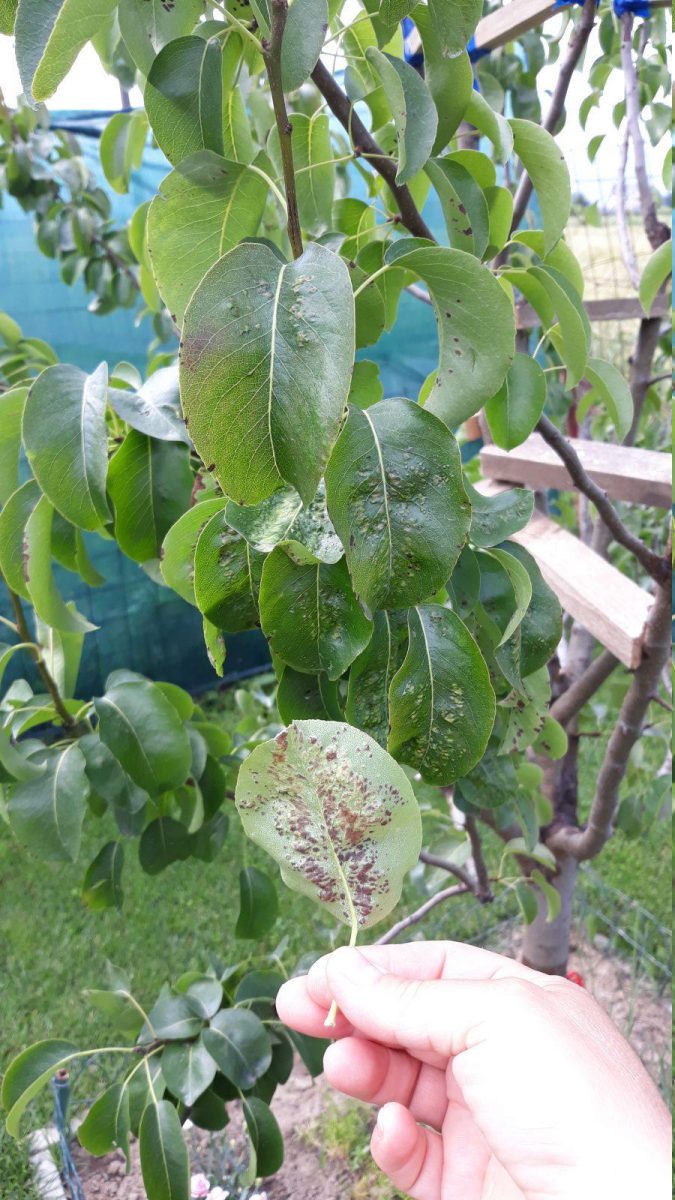
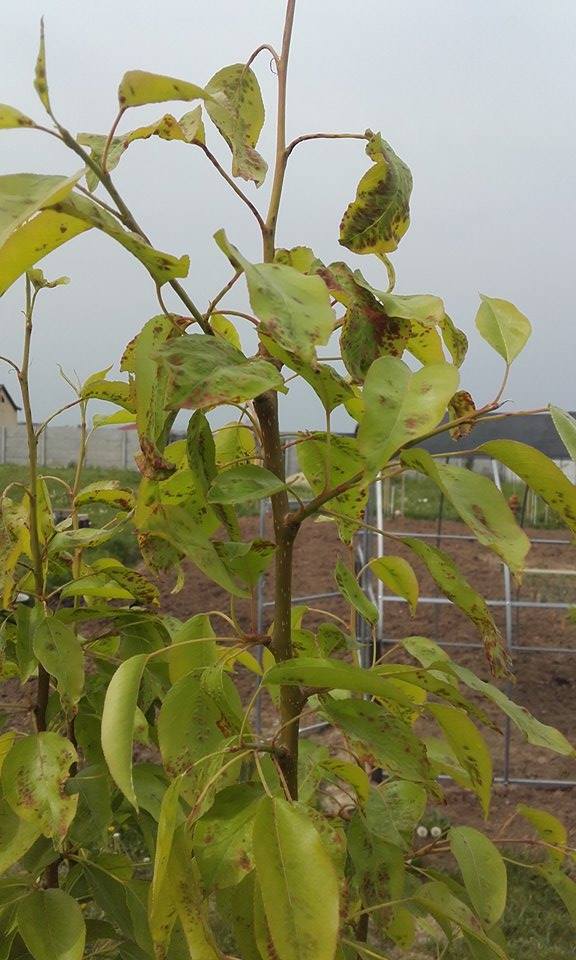
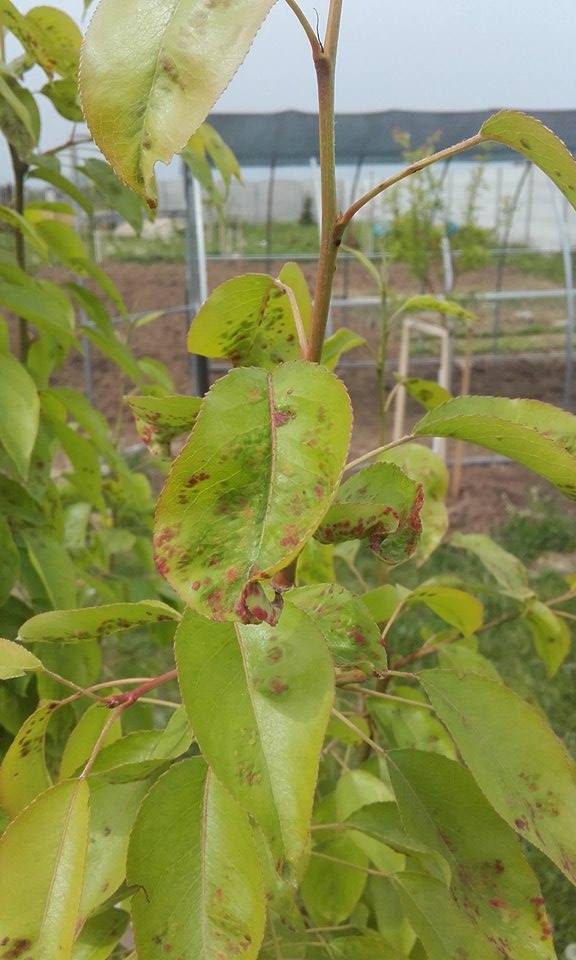
Control methods:
- chemical treatments with specific insecticides.
Recommended products
-
You can find products on a different store
Change Store -
You can find products on a different store
Change Store -
You can find products on a different store
Change Store -
You can find products on a different store
Change Store -
You can find products on a different store
Change Store -
You can find products on a different store
Change Store -
You can find products on a different store
Change Store -
You can find products on a different store
Change Store -
You can find products on a different store
Change Store -
You can find products on a different store
Change Store -
You can find products on a different store
Change Store -
You can find products on a different store
Change Store -
You can find products on a different store
Change Store -
You can find products on a different store
Change Store -
You can find products on a different store
Change Store -
You can find products on a different store
Change Store -
You can find products on a different store
Change Store -
You can find products on a different store
Change Store -
You can find products on a different store
Change Store -
You can find products on a different store
Change Store -
You can find products on a different store
Change Store -
You can find products on a different store
Change Store -
You can find products on a different store
Change Store -
You can find products on a different store
Change Store
Sciaphobus squalidus
It is a dangerous species that attacks mainly buds and flower buds. It develops one generation every two years and overwinters as an adult in the topsoil. In spring, the adults emerge and climb the trees and feed on the buds and flower buds. The larvae are not harmful to trees, they feed on the roots of spontaneous herbaceous plants.
Control methods:
- soil mobilization in the orchard (autumn);
- chemical treatments with specific insecticides.
The apple aphid (Aphis pomi)
It is a polyphagous species that attacks several species of fruit trees. Aphids colonize the underside leaves and growing tips. The attacked trees have small growths, the fruits remain small, the production is strongly affected. Aphids also transmit several viruses.
Control methods:
- chemical treatments with specific insecticides.
Recommended products
-
You can find products on a different store
Change Store -
You can find products on a different store
Change Store -
You can find products on a different store
Change Store -
You can find products on a different store
Change Store -
You can find products on a different store
Change Store -
You can find products on a different store
Change Store -
You can find products on a different store
Change Store -
You can find products on a different store
Change Store -
You can find products on a different store
Change Store -
You can find products on a different store
Change Store -
You can find products on a different store
Change Store -
You can find products on a different store
Change Store -
You can find products on a different store
Change Store -
You can find products on a different store
Change Store -
You can find products on a different store
Change Store -
You can find products on a different store
Change Store -
You can find products on a different store
Change Store -
You can find products on a different store
Change Store -
You can find products on a different store
Change Store -
You can find products on a different store
Change Store -
You can find products on a different store
Change Store -
You can find products on a different store
Change Store -
You can find products on a different store
Change Store -
You can find products on a different store
Change Store
Pear psylla (Psylla pyri)
It develops 2-3 generations per year and overwinters as an adult in or inside bark cracks. Both larvae and adults feed on tree sap. After the attack, tree development is negatively influenced, leaves become deformed, and frost resistance decreases.
Control methods:
- chemical treatments with specific insecticides.
Recommended products
-
You can find products on a different store
Change Store -
You can find products on a different store
Change Store -
You can find products on a different store
Change Store -
You can find products on a different store
Change Store -
You can find products on a different store
Change Store -
You can find products on a different store
Change Store -
You can find products on a different store
Change Store -
You can find products on a different store
Change Store -
You can find products on a different store
Change Store -
You can find products on a different store
Change Store -
You can find products on a different store
Change Store -
You can find products on a different store
Change Store -
You can find products on a different store
Change Store -
You can find products on a different store
Change Store -
You can find products on a different store
Change Store -
You can find products on a different store
Change Store -
You can find products on a different store
Change Store -
You can find products on a different store
Change Store -
You can find products on a different store
Change Store -
You can find products on a different store
Change Store -
You can find products on a different store
Change Store -
You can find products on a different store
Change Store -
You can find products on a different store
Change Store -
You can find products on a different store
Change Store














































































































































































































































































































































































































































